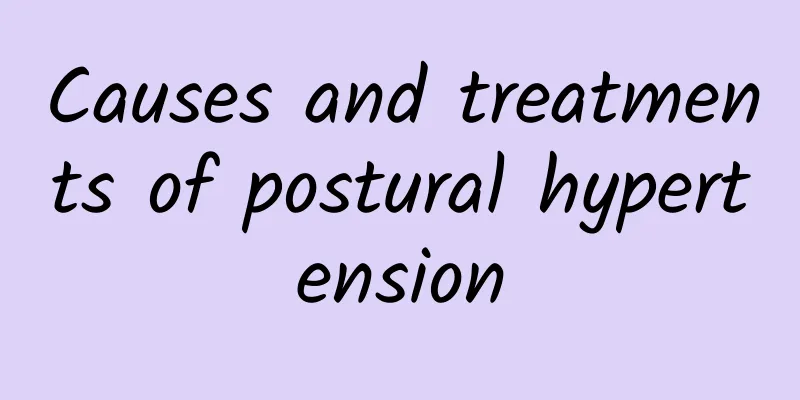Causes and treatments of postural hypertension

|
Hypertension is a very common disease in many people. In clinical practice, postural hypertension is a common classification. So, what are the causes of postural hypertension? Causes of postural hypertension: The mechanism of orthostatic hypertension is generally believed to be related to the overfilling of the "gravity vascular pool" of the veins and venous sinuses. The veins and venous sinuses below the horizontal plane of the human heart will swell when affected by the gravity of the blood. These veins or venous sinuses are called "gravity vascular pools" in medicine. These vascular pools are not affected when a person lies flat, but when standing or sitting, the blood flow back to the heart is reduced due to the excessive blood stagnation in the venous vascular pools in the sagging parts, which reduces the cardiac output, leading to overexcitement of the sympathetic nerves, and the small blood vessels throughout the body, especially the small arteries, are in a state of contraction or spasm for a long time, causing increased blood pressure. Some people are particularly sensitive to this reaction, so they can develop postural hypertension. Treatment of postural hypertension: Another prominent problem with orthostatic hypertension is that its pathogenesis is different from that of general hypertension, so the treatment methods for general hypertension cannot be used to treat orthostatic hypertension. Experiments have shown that the use of diuretics not only cannot lower blood pressure, but will stimulate blood pressure to rise further. Therefore, the treatment of orthostatic hypertension is mainly to strengthen physical exercise and increase the fullness of muscles. Generally, medication is not required. For those with obvious individual symptoms, appropriate amounts of neurological function regulators (such as oryzanol, etc.), central and peripheral nerve nutrition agents (such as brain rehabilitation, vitamins, inosine and related Chinese medicines), and tranquilizers can be taken. Orthostatic hypertension generally has a good prognosis and no long-term adverse consequences. Therefore, if a person is found to have elevated blood pressure during an outpatient examination, it should be determined whether it is orthostatic hypertension to avoid unnecessary or incorrect treatment measures that affect the patient's physical and mental health. |
<<: Just a few simple moves can easily remove calf fat
>>: Eat these when you have a cold and a headache, and you will get better quickly
Recommend
Symptoms of itchy bumps on the genitals
Many people have always thought that only women&#...
How can I control ejaculation?
Sex is an essential spice for couples. However, i...
The solution for men to sweat during sleep at night is these
Many men have experienced sweating during sleep a...
Reasons for premature ejaculation in boys
Sexual function generally declines with age. When...
How to avoid prolonged erections
Avoiding prolonged erections is harmful to health...
What are the dietary rules for male menopause?
What foods are good for male menopause is a quest...
Can 999 Piyanping be used to rub the glans?
Inflammation of the glans penis mucosa is called ...
What is the best way to supplement sperm?
The reason why many male friends cannot have norm...
What is the reason for low blood sugar after a meal?
Generally speaking, after a meal, people consume ...
What causes vaginal pain?
The human body is a complex whole. Every part of ...
The six most vulnerable parts of men that are most susceptible to disease
Men have always played the role of the strong and...
How to improve sperm motility?
With the development of economy, work, life, econ...
What does prostate ultrasound check?
In hospitals, there are various instruments used ...
What methods can treat impotence
Many men will experience symptoms such as impoten...
Unable to urinate! Beware of the warnings from bladder fibroids
If you ask what is the most common tumor in the u...









